This article was co-authored by wikiHow Staff. Our trained team of editors and researchers validate articles for accuracy and comprehensiveness. wikiHow's Content Management Team carefully monitors the work from our editorial staff to ensure that each article is backed by trusted research and meets our high quality standards.
wikiHow marks an article as reader-approved once it receives enough positive feedback. In this case, several readers have written to tell us that this article was helpful to them, earning it our reader-approved status.
This article has been viewed 276,541 times.
Learn more...
Whether you accidentally fall off a balcony or you’re trying to escape a fire by jumping out of a window, the thought of falling multiple stories is pretty scary. While there's no guarantee for survival, there are ways to minimize the force of impact and decrease your chances of serious injury.
Steps
Positioning Yourself
-
1Think quickly. Falling from a window is an extremely quick process, especially if it’s only from the second story. The first thing you should do is stay calm and think quickly. You have only seconds to increase your chances of survival so it’s crucial to act on your toes.
-
2Keep your feet down. The best way to survive a fall is to avoid hitting your head. People who land on their head almost always die, even if it was just from a few stories.[1] While landing on your feet can sometimes cause pelvic injuries, it is a much safer bet than landing head first.
- Keep your legs and feet tight pressed against each other so that both of your feet hit the ground at the same time.
- If you find yourself falling out a window head first, try to quickly reposition yourself so your feet will be the first thing to hit the ground.[2] A fall from a second story window takes only seconds so you must act quickly.
Advertisement -
3Lower your body. If you are trying to escape from a window and you can avoid jumping, it is best to hold onto the windowsill or ledge, lower yourself to arms length, and drop from there. This will shorten the distance between you and the ground and therefore, reduce the impact.
- Before you fall, push off a bit with your feet and hands to make sure you clear the wall.
Minimizing Impact
-
1Slow down your fall. The severity of injuries from a fall is closely related to the speed of impact. This explains why a long fall is more dangerous than a short one. Slowing down your fall may not be possible from a two story window since it lasts only seconds, but if you find yourself falling from a higher distance, lie flat to increase your surface area and slow yourself down.[3]
- If you lie flat to create resistance, make sure you position yourself to land feet first before you land.
-
2Choose a landing spot. If you happen to have an option of what to land on, always opt for the softer option. Survivors have fallen into snow, trees, or something that absorbs your landing better than concrete. So if you’re falling on the edge of concrete and grass, try to land on the grass to minimize your impact.
-
3Relax your body. Staying calm and relaxed may be the last thing on your mind when you’re falling to the ground, but tensing your muscles up increases your chance of injury. When you remain relaxed, your muscles, joints, and ligaments move naturally and in an ideal way that helps you avoid serious damage. [4]
- One way to stay relatively calm is to focus on what your next steps are for surviving and preventing injury. This will keep you from panicking about all of the things that could happen to you.
Landing Safely
-
1Bend your knees. Right before you fall, bend your knees for the impact and land on the balls of your feet. This reduces the impact on your body and can be the difference between surviving with minimal injury and permanent damage to your spine or pelvis.
- After your head, your pelvis is the other body part you want to avoid injuring during a fall. The pelvis is a ringlike structure of three bones located at the base of the spine. It’s surrounded by blood vessels, nerves, and organs, so an injury there can cause substantial damage, including paralysis.[5]
- Do not bend your knees too far. You only want a slight bend so your knees aren’t locked.
-
2Extend your knees after you hit the ground. You want to land softly on the balls of your feet. This will cause you to slightly lift up, resulting in less shock to your body and will add power to your spring. Your legs will sustain less injury so hopefully you don’t break any bones or severely damage your ligaments.
-
3Tuck your body. You should position your body to roll forward after impact, rather than immediately bounce up or collapse. Tighten your stomach muscles to draw your knees towards your chest, tuck your chin in, and remember to keep your arms in as you prepare to roll. [6]
-
4Roll forward. Once you have tucked your body into a ball, roll at a 45 degree angle onto your shoulder instead of straight forward or sideways. Roll onto your back and if you don’t feel any pain, continue to roll back onto your knees and then your feet. [7] Rolling forward allows most of the energy from your fall to release into the roll, and not into your legs or spine.
- If, once you have rolled onto your shoulder, you think you may have broken a bone or injured your spine, do not move onto your feet or knees. Stay in a comfortable position until help arrives.
- Make sure to avoid any impact on your head or neck when rolling.
Community Q&A
-
QuestionFor a story I'm writing, I need to know if you could survive falling two stories into a bush?
 Community AnswerA bush can definitely break the fall from two stories. It is likely that your character would break some bones though and still require hospital attention.
Community AnswerA bush can definitely break the fall from two stories. It is likely that your character would break some bones though and still require hospital attention. -
QuestionCould I survive falling out of a building by falling on to a tree?
 Community AnswerPossibly, if you hit the tree it can slow your fall, although it is best to try to avoid hitting anything like your head. If your chest were to hit it, breaking a couple ribs of course, you would slow and take less damage from a fall. However, every situation is different and in some cases a tree could make things worse.
Community AnswerPossibly, if you hit the tree it can slow your fall, although it is best to try to avoid hitting anything like your head. If your chest were to hit it, breaking a couple ribs of course, you would slow and take less damage from a fall. However, every situation is different and in some cases a tree could make things worse. -
QuestionIs it possible to fall two stories, land on a nearby building, and survive with only broken bones?
 Community AnswerIf the building gap is not significant, you can, but there's also the chance of the second building's roof collapsing during your landing (if the roof isn't strong enough to hold the weight).
Community AnswerIf the building gap is not significant, you can, but there's also the chance of the second building's roof collapsing during your landing (if the roof isn't strong enough to hold the weight).
Warnings
- Regardless of whether you follow these instructions or not, you may still die or become severely injured from falling.⧼thumbs_response⧽
References
- ↑ http://www.ncbi.nlm.nih.gov/pmc/articles/PMC1397448/?page=2
- ↑ http://mentalfloss.com/article/63088/how-far-can-you-fall-and-still-survive
- ↑ http://mentalfloss.com/article/63088/how-far-can-you-fall-and-still-survive
- ↑ http://www.outsideonline.com/1920216/how-fall-right
- ↑ http://www.slate.com/articles/news_and_politics/explainer/2008/01/how_to_survive_a_47story_fall.html
- ↑ http://practicalhorsemanmag.com/article/horseback-riding-falls-jim-wofford-27838
- ↑ http://practicalhorsemanmag.com/article/horseback-riding-falls-jim-wofford-27838
About This Article
Falling from a 2-story window can cause death or serious injury, but by positioning yourself during the fall and landing correctly, you can improve your chances of survival. Try to keep your feet down when you fall, since people who land on their head nearly always die. If you’re trying to escape through a window, lower yourself down with your arms before letting go, which will reduce the distance between you and the ground. As you approach the ground, try to relax your body, since tensing your muscles can cause additional injury. Bend your knees and try to land on the balls of your feet, which is the best way to absorb the impact. After you land, extend your legs to help take the force of the impact. For tips on how to slow down your fall if you’re falling from a higher window, keep reading.

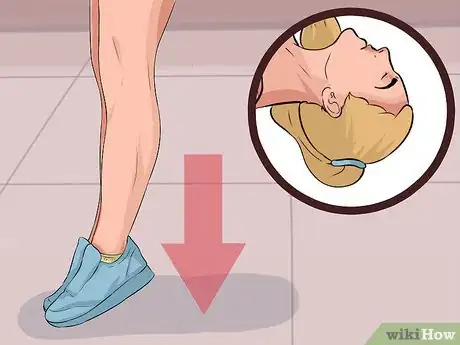
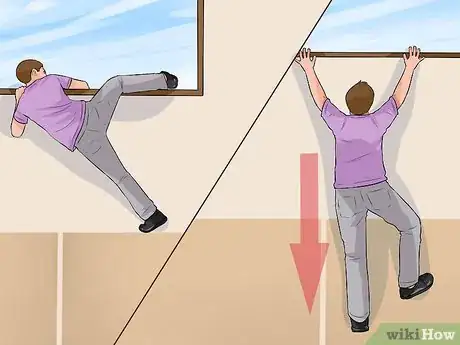
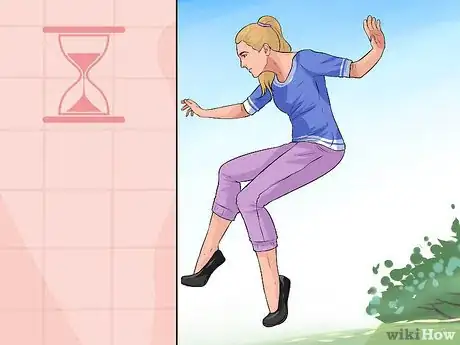



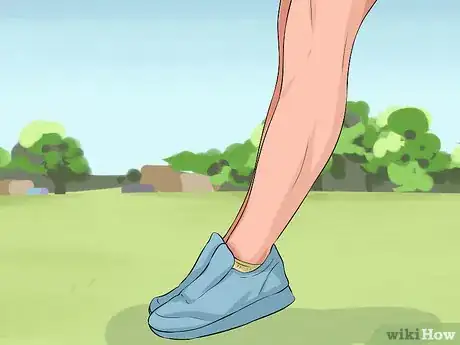

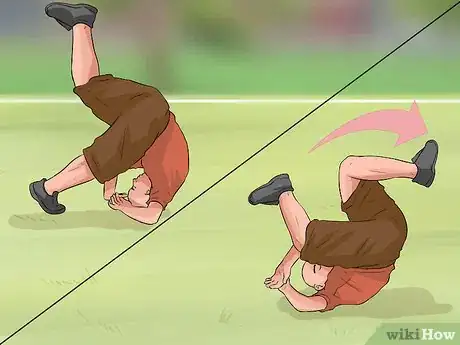



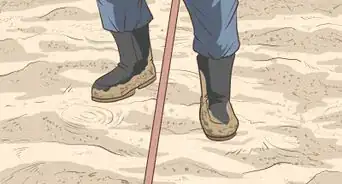

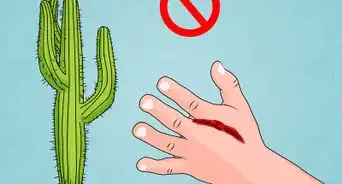
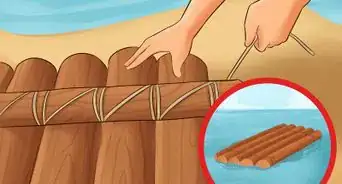


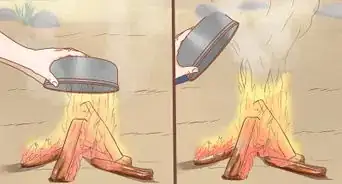













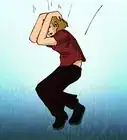






































Medical Disclaimer
The content of this article is not intended to be a substitute for professional medical advice, examination, diagnosis, or treatment. You should always contact your doctor or other qualified healthcare professional before starting, changing, or stopping any kind of health treatment.
Read More...